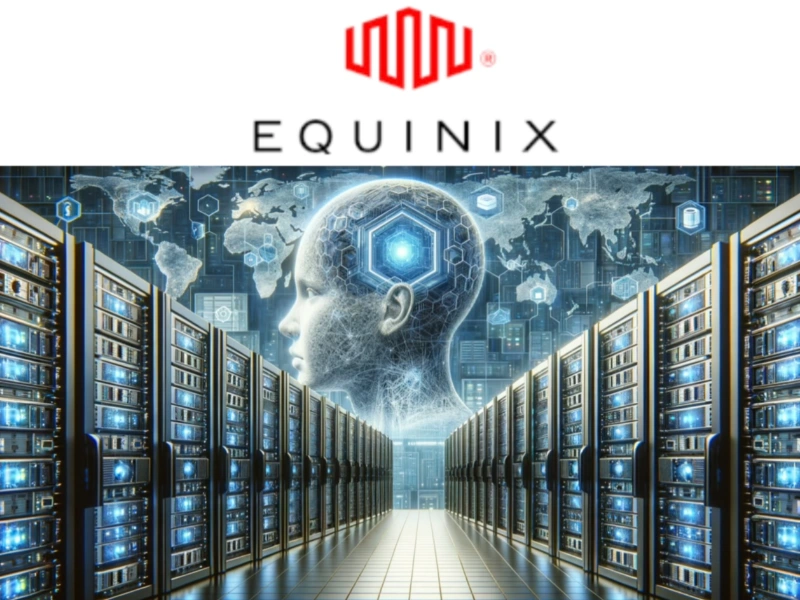- Private AI allows businesses to leverage AI technologies while safeguarding sensitive data and maintaining control over their intellectual property, according to Milind Wagle, Chief Information Officer of Equinix.
- Assessing whether private AI aligns with the organization’s objectives is crucial, particularly for businesses operating in highly regulated sectors like healthcare and finance.
- Integrate effective data management strategies, such as adopting cloud adjacent storage, to ensure efficient data transfer and maintain data control in private AI implementations.
Milind Wagle, CIO of Equinix: Learn how to leverage AI while safeguarding privacy and retaining control over your data
While the advantages of AI are evident, enterprises require a cautious, strategic approach to reap those benefits without jeopardizing their valuable intellectual property. This is why numerous businesses are opting to construct their own AI models, host them on private infrastructure, and utilize solely proprietary datasets for training. This concept is referred to as private AI.
Many enterprises now understand that when they input sensitive data into public AI services such as ChatGPT, that data becomes integrated into the model. Consequently, the data could potentially be exposed to anyone utilizing the model in the future. OpenAI’s FAQ itself advises users against sharing sensitive information with ChatGPT, as there is no method to delete specific prompts from a user’s history.
With private AI, it’s possible to derive business insights from data without compromising privacy or data control. Read further to discover 4 elements you should integrate into your strategy to excel with private AI.
1. Assess if private AI aligns with your objectives
First and foremost, it’s crucial to recognize that private AI may not be suitable for all businesses, especially if they lack a clearly defined vision of success tailored to their specific circumstances. For businesses operating in highly regulated sectors like healthcare and financial services, the benefits of private AI are evident. They understand the necessity to avoid any actions that might endanger their sensitive data, making private AI an ideal choice.
Businesses in unregulated sectors might still benefit from private AI, but the value proposition isn’t always straightforward. These businesses must weigh the trade-offs: the risk of data exposure versus the impact on cost and flexibility of utilizing AI on public infrastructure. Some companies are drawn to public cloud solutions due to their perceived ease and cost-effectiveness in accessing scalable compute infrastructure for AI models. However, accessing public cloud compute often proves more expensive and complex than anticipated, primarily due to high data egress fees.
If the purported benefits of public cloud infrastructure fail to outweigh the potential risks, then your business is likely well-suited to proceed with private AI.
2. Integrate data management into your strategy
Amidst the rapid advancements in AI technology, it’s worth pausing to acknowledge a fundamental truth: the quality of your AI models is contingent upon the data you feed into them. This underscores the importance of effective data management for successful private AI implementation.
You must devise a strategy for efficiently transferring the right data to the appropriate destinations without delay. This poses a challenge because AI infrastructure inherently spans various locations:
A.Gathering data from all your applications, which are likely distributed across a hybrid multicloud architecture, to train your models.
B.Deploying inference workloads at the edge—where end users interact with AI models—to ensure proximity between data sources and processing sites, crucial for minimizing network latency.
C.Deploying training workloads on core infrastructure with the substantial compute capacity necessary for these tasks.
D.Establishing flexible, high-performance networking between different workloads to facilitate swift and reliable data movement.
Adopting a cloud adjacent storage approach can help build an AI-ready data architecture, allowing you to incorporate public cloud services into your private AI strategy while mitigating risks, costs, and complexity. This approach grants you the benefits of both worlds: proximity to the cloud for accessing services when needed while maintaining authoritative storage separate from the cloud. This level of data control epitomizes an effective private AI strategy.
3. Evaluate your computational requirements
The exponential growth of AI has led to heightened demand for potent GPU hardware. Manufacturers are striving to meet this demand, yet supply shortages are anticipated to persist. Limited hardware availability could impede your private AI objectives. Nonetheless, there are strategies to circumvent this bottleneck and secure the required compute capacity.
Also read: Deep learning AI enhanced by MIT-born Akamai and Neural Magic
While GPUs are commonly associated with AI hardware, other readily available CPUs can suffice for less demanding inference workloads. In fact, you could utilize a Bare Metal as a Service solution, such as Equinix Metal®, to deploy CPUs on demand without hefty upfront costs.
Moreover, for workloads necessitating GPUs, alternatives exist beyond managing your hardware. For instance, Equinix recently introduced a fully managed private cloud service in collaboration with NVIDIA. This service streamlines the procurement of advanced AI infrastructure, bundled with essential colocation, networking, and managed services for hosting and operating that infrastructure. The solution offers the flexibility characteristic of public cloud solutions while enabling data control within a private environment.
Also read: Equinix serves fully managed service for NVIDIA Supercomputing
4. Plan for sustainability and efficiency
Concerns regarding the sustainability ramifications of the AI frenzy are valid.
AI workloads, particularly training workloads, can be exceptionally energy-intensive. To mitigate the carbon footprint of these workloads, optimizing efficiency is imperative.
Innovations like liquid cooling technology for data centers offer a more energy-efficient alternative to traditional air cooling. At Equinix, extensive testing of liquid cooling has paved the way for its adoption in supporting production workloads.

Moreover, considering workload placement’s impact on sustainability is crucial. Optimal placement entails positioning workloads where they can draw upon the least carbon-intensive energy from the local grid. Collaborating with a digital infrastructure partner committed to investing in renewable energy can facilitate this objective.
Equinix is progressing towards its goal of achieving 100% renewable energy coverage globally by 2030. Through investments in power purchase agreements supporting renewable energy projects worldwide, Equinix empowers customers to pursue AI initiatives sustainably.

